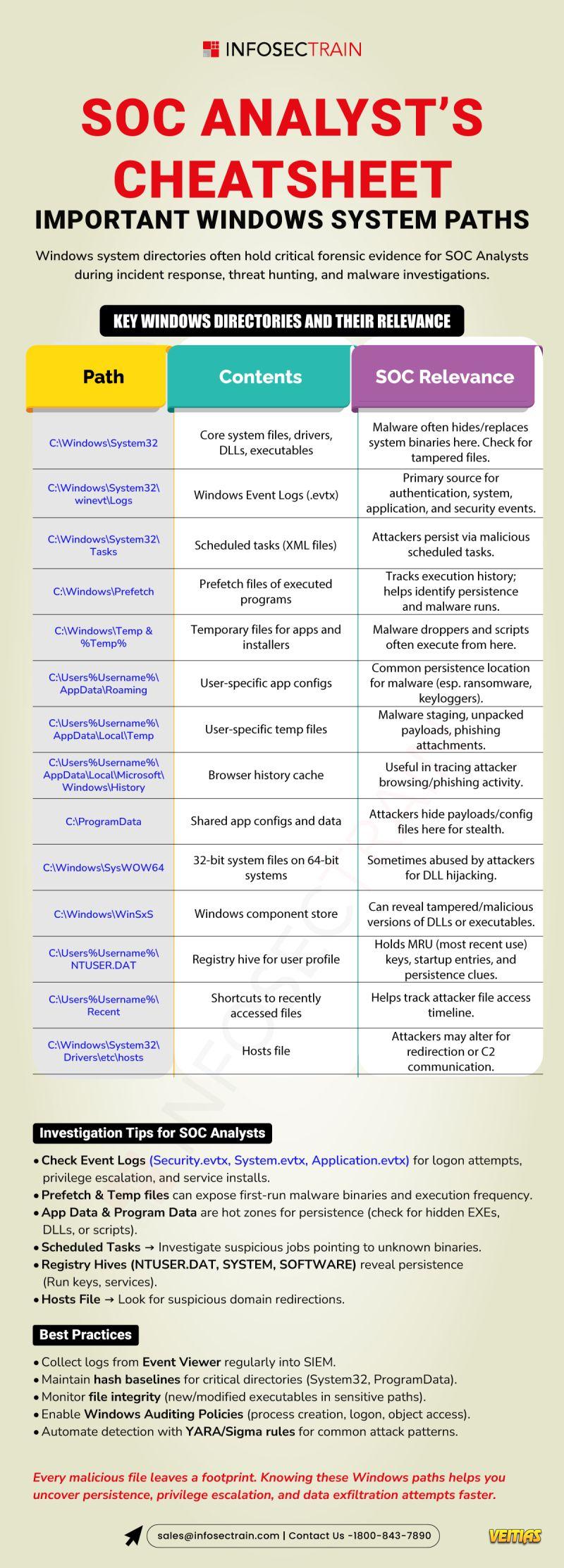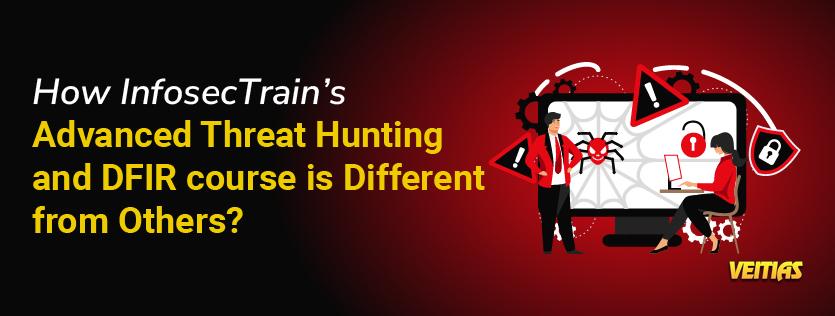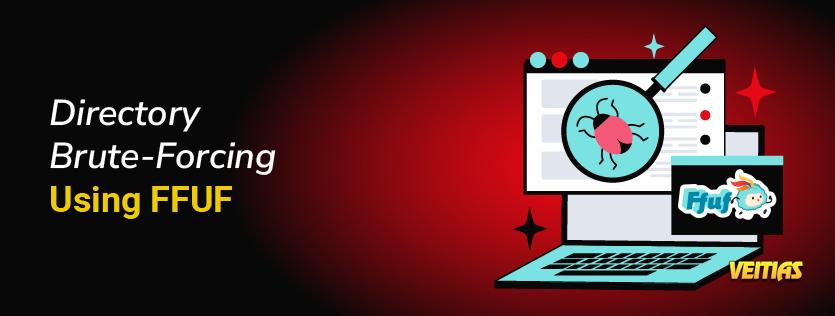When seconds matter, knowing where to look wins investigations. From C:\Windows\System32 to AppData\Roaming and scheduled tasks, these Windows paths are where persistence, tampering, and attacker footprints hide.
Check Event Logs, Prefetch, Temp folders, ProgramData and NTUSER.DAT early — they often reveal first-run binaries, stealthy persistence mechanisms, and timeline clues that SIEM alerts alone can miss.
Pro tip: baseline hashes, enable process creation auditing, and automate detection with YARA/Sigma rules to turn noisy signals into actionable leads. ⚡️
Whether you’re hunting malware, triaging an incident, or building playbooks — map these paths into your runbooks and make them your default starting points.
Save this post for your next tabletop or onboarding session — and share with your team.
Check Event Logs, Prefetch, Temp folders, ProgramData and NTUSER.DAT early — they often reveal first-run binaries, stealthy persistence mechanisms, and timeline clues that SIEM alerts alone can miss.
Pro tip: baseline hashes, enable process creation auditing, and automate detection with YARA/Sigma rules to turn noisy signals into actionable leads. ⚡️
Whether you’re hunting malware, triaging an incident, or building playbooks — map these paths into your runbooks and make them your default starting points.
Save this post for your next tabletop or onboarding session — and share with your team.
When seconds matter, knowing where to look wins investigations. From C:\Windows\System32 to AppData\Roaming and scheduled tasks, these Windows paths are where persistence, tampering, and attacker footprints hide. 🔎
Check Event Logs, Prefetch, Temp folders, ProgramData and NTUSER.DAT early — they often reveal first-run binaries, stealthy persistence mechanisms, and timeline clues that SIEM alerts alone can miss.
Pro tip: baseline hashes, enable process creation auditing, and automate detection with YARA/Sigma rules to turn noisy signals into actionable leads. ⚡️
Whether you’re hunting malware, triaging an incident, or building playbooks — map these paths into your runbooks and make them your default starting points.
Save this post for your next tabletop or onboarding session — and share with your team. 👥
0 Comments
0 Shares
484 Views
0 Reviews











